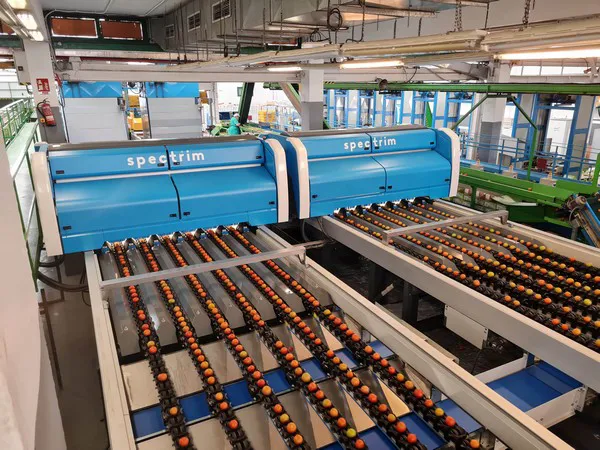Tomatoes are one of life’s blessings. For growers, tomatoes give a high yield and are in strong demand. Consumers appreciate that tomatoes are packed with healthy antioxidants, nutrients, and vitamins. For processed food manufacturers, tomatoes add color, flavor, and natural goodness to juices, pastes, purees, sauces, and ketchup. For food processing lines, tomatoes are a swelling revenue stream.

But after counting the blessings, let’s pause for a reality check. While global demand for tomatoes is increasing, so are the pressures they bring to processing lines. There’s an urgent need to sort, grade, and pack ever-greater volumes of tomatoes during the short harvesting season without letting standards slip. Yet the shift in consumer preference towards greater choice in tomato varieties, especially smaller cherry tomatoes, makes the crop even harder to sort and grade. And at the same time as striving to increase throughputs, processors must also maintain or improve food safety and product quality – brand reputations depend on it.
The booming popularity of tomatoes has led to the global production of approximately 190 billion tonnes yearly. These crops occupy some five million hectares of land – a total surface area greater than 153 of the world’s 192 nations. And when market researchers look ahead to the next five years, they see that the global sales of fresh and processed tomatoes will keep increasing at a compound annual growth rate of about 4-6%.
The key processing tasks of sorting, grading, and packing tomatoes have become much more complex. The introduction of new tomato varieties has brought a far greater range of differences in the fruit’s color, size, and shape. Retailers and consumers have raised their quality expectations to previously unobtainable levels. Exporting far across the globe has placed a premium on shelf life and the ability to forecast it. Yet two crucial measures of quality, firmness and Brix content, remain hidden from the human eye or cameras, and if the crop isn’t handled gently enough at any stage during processing, all quality can be lost.
In the last five years, TOMRA has broadened its offering by acquiring two innovative New Zealand-based companies, BBC Technologies, and Compac, so it is now a provider of integrated post-harvest-to-pack solutions. These take care of everything from tipping the fruit onto the line to packing it at the other end and are well-suited to tomatoes. Because these solutions are modular and scalable, they can be tailored to businesses of all sizes. And because of TOMRA’s control software, they can be switched from one tomato variety to another with unrivaled ease and speed. (One exception is small, on-the-vine tomatoes, which still have to be sorted manually.)
The TOMRA Food business area that designs, manufactures, installs, calibrates, and maintains post-harvest-to-pack solutions for tomato producers and packers is TOMRA Fresh Food. (The other business area is TOMRA Processed Food.) TOMRA has a good presence in the tomato market and is working to build on this, particularly in Latin America and Europe – and behind the scenes, TOMRA Food’s R&D team is developing yet more innovations and technical solutions to help tomato producers and packers.
Integrated post-harvest-to-pack solutions
TOMRA’s mission with tomatoes, as with other food categories, is to lead the resource revolution in a world where every piece of food counts. For large tomatoes, the company’s innovative, industry-leading solutions include the TOMRA 5S Advanced sorting and sizing platform, Spectrim sorter and grader, and UltraView inspection module or Inspectra² grading system as additional options. For small, snacking tomatoes, TOMRA offers two sorters, the MIRA360 and the Small Fruit Sorter (SFS), with InVision2 grading system. And for tomatoes of all sizes, TOMRA provides a wide range of automatic weighing and filling solutions.
For more information:
Marijke Bellemans
TOMRA
Tel.: +32 (0)476 74 19 18
Email: marijke.bellemans@tomra.com
www.tomra.com/food
